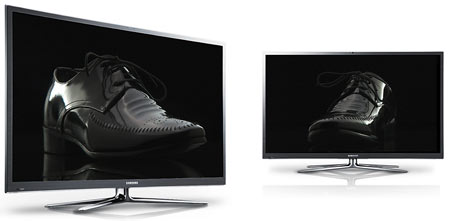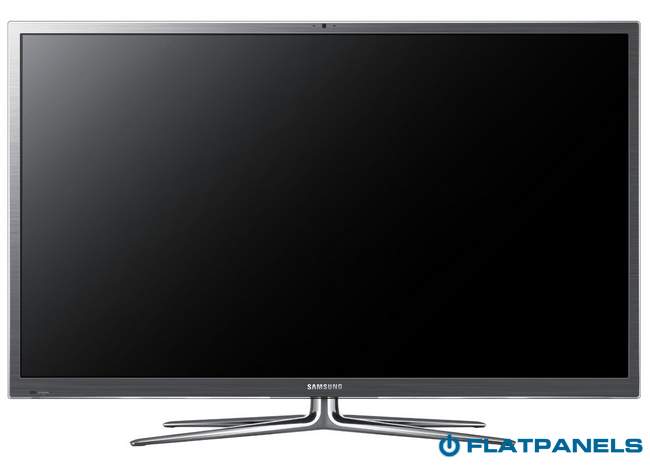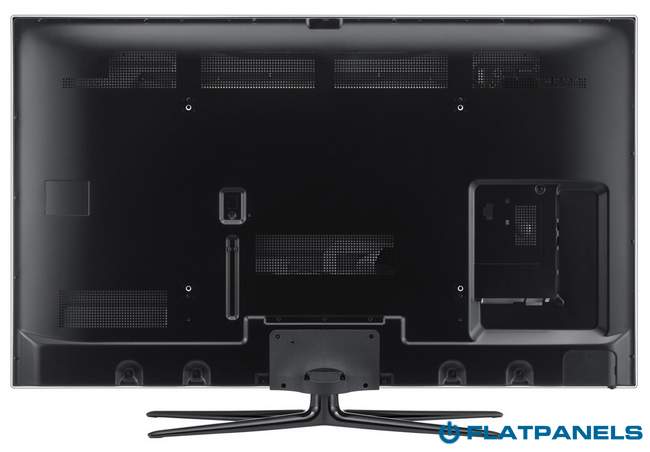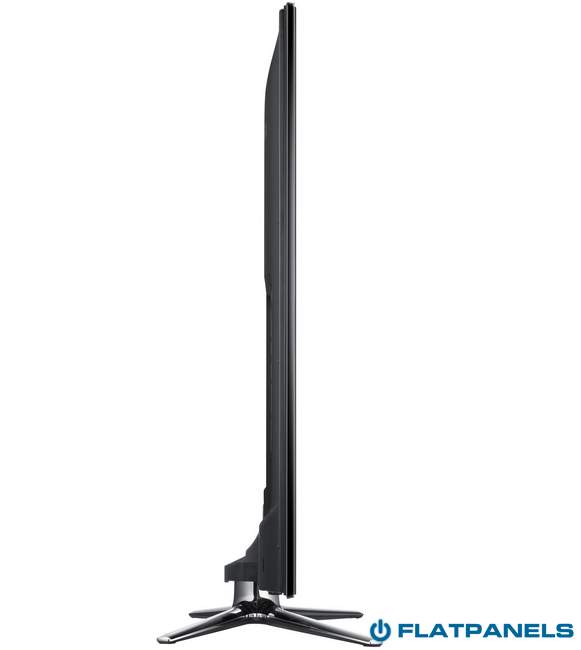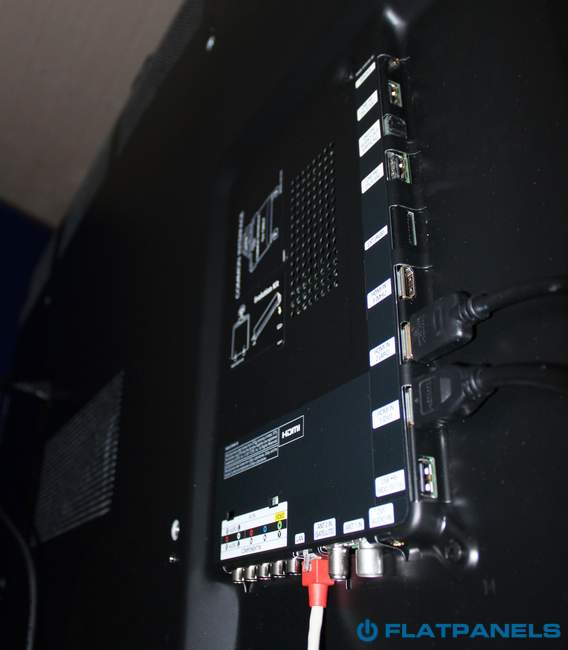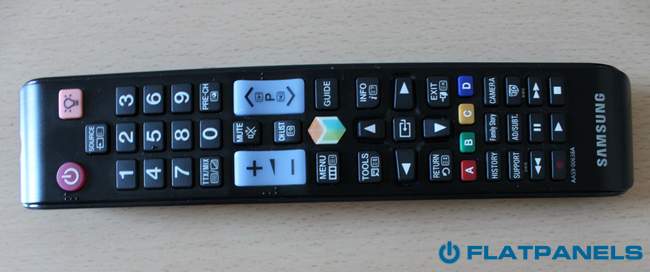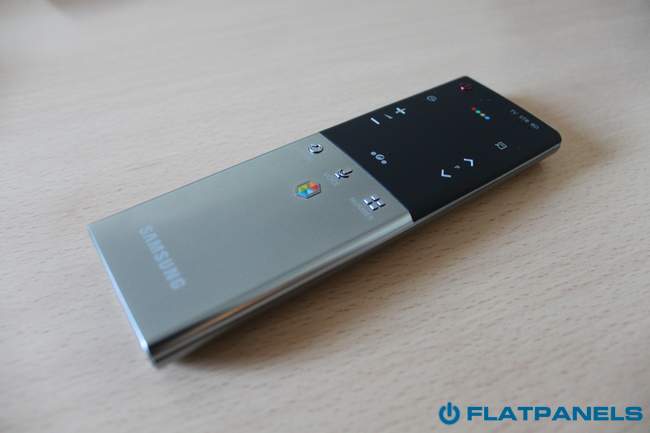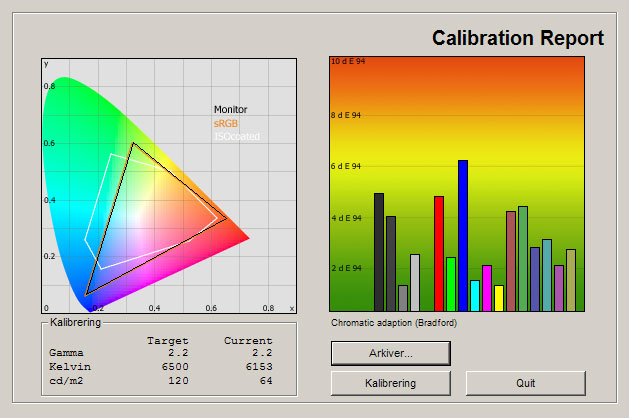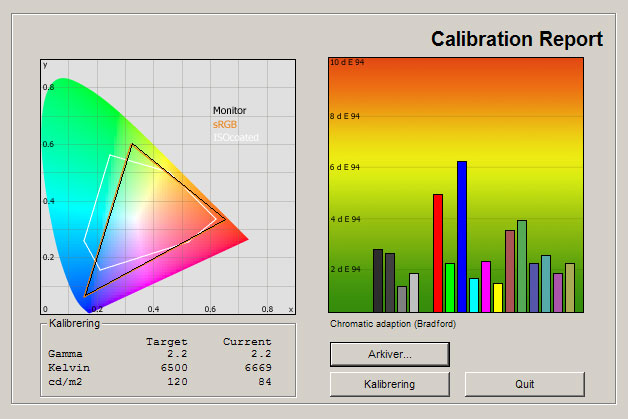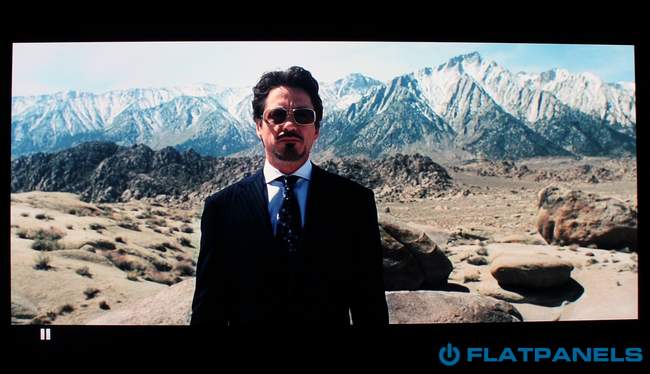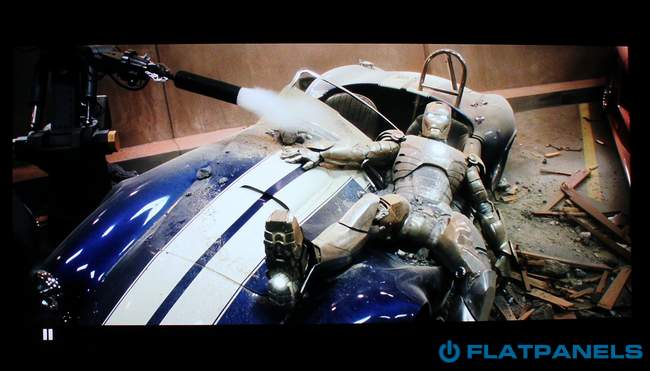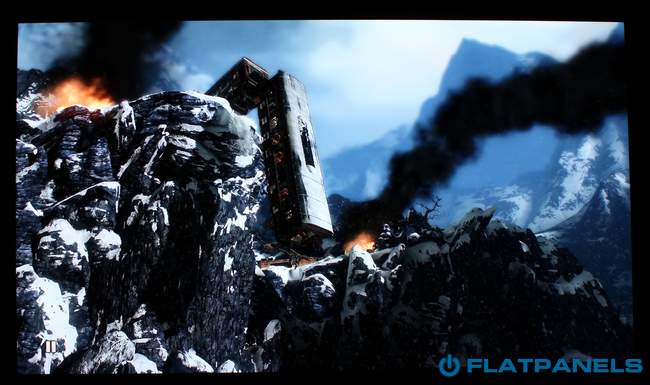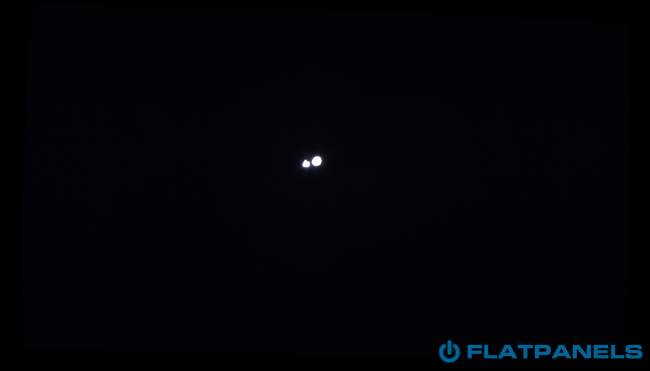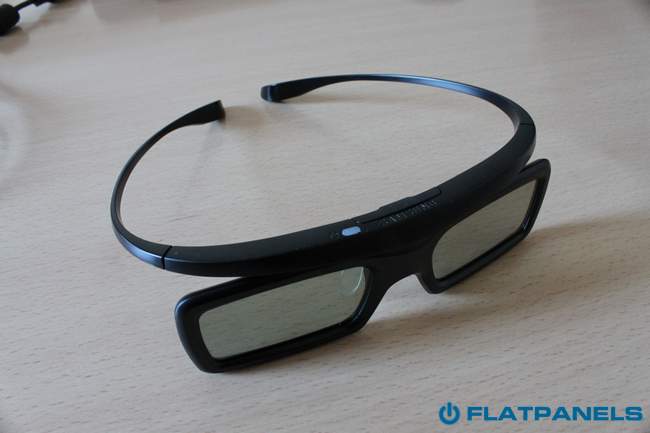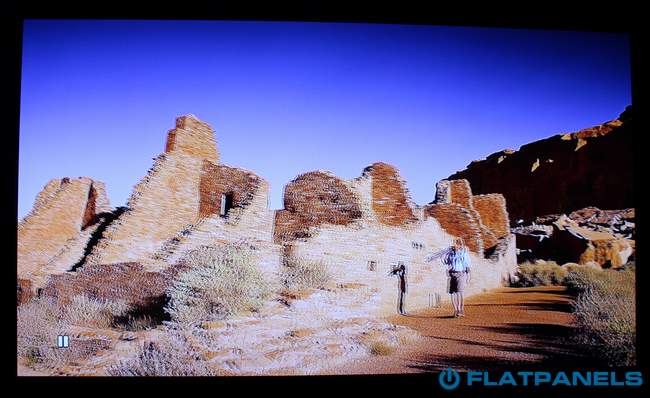Review: Samsung E8000
TABLE OF CONTENTS Specs - Our first impressions - Test tools - Functionality - Power consumption - Calibration - Picture quality - 3D picture quality - PC & Media Center - Viewing angles - Sound - Conclusion - Debate Samsung E8000 review
A few years ago, Samsung introduced their first slim plasma TVs and since then they have continuously challenged Panasonic on their home ground. Now the new E8000 has arrived as the successor to last year’s D8000 model. With Smart TV, Smart interaction and active 3D, Samsung hopes to take the definite lead in the plasma market.
But can Samsung E8000 compete with Panasonic’s new 2012 plasma TVs such as the VT50? Has picture quality actually been improved? And why would you choose Samsung’s plasma TV over their LED? FlatpanelsHD will find out in this review.
Samsung E8000 is available in 51, 60 (only US) and 64 inches in the US and Europe.
Subscribe to our Newsletter, RSS or twitter to receive notice when new reviews are online.
Size: 64" widescreen Resolution: 1920x1080 Response time: - Contrast ratio: - Brightness: - Viewing angles (H/V): Angle Free Panel type: Plasma TV Wall mounting: Swivel stand: Dimensions (HxWxD): 88.3cm x 148.5cm x 5.5cm (without stand) Weight 34.5 kg Built-in speakers: Inputs VGA DVI (but possible to convert through HDMI)
Audio (type) (Audio in/out)
S-video Composite Component HDMI (4 inputs, 1 HDMI 1.4)
Outputs Audio (type) (1 output, headphones)
S/PDIF (optical)
Price and retailer:
| US retailer | UK retailer |
 |
Our first impressions
Samsung’s plasma TVs have remained largely unchanged for years. After the disruption year where they introduced very slim plasma TVs, only the bezel has changed in the last few updates.E8000 has a slimmer bezel than previous plasma TVs but it is still far less elegant than its LED counterparts. The base is of the four-legged type and has a built-in swivel function.
Input and output connectors are all found on the back, and just like in the last few years, Samsung has made sure to make them point either down or to the side to enable slim wall mounting solutions.
One more thing that has not changed is buzzing. We had the 64-inch model in our testing lab and we heard a noticeable buzzing sound, audible even from typical seating distance. We know from experience that it varies from sample to sample, but the problem is still around, it seems.
Test tools
Our TV signal is DVB-S (satellite) from Canal Digital and DVB-T (terrestrial). We also have an analogue TV connection. Testing is done with the DVE (digital video essentials) and Peter Finzel test DVD. Testing is also done with DVD, TV, Blu-Ray and Media center/PC.We use our own monitorTest. The software supports some of the traditional test patterns used to evaluate displays as well as some new and unique test patterns developed by the people here on FlatpanelsHD.
Sony PlayStation 3 is our Blu-Ray player.
All contrast measurements are based on the ANSI methodology.
Functionality
Samsung’s E8000 plasma TV comes with Samsung’s complete Smart TV platform with apps, dual-core processor and the Smart Interaction suite with voice and gesture controls.Two remote controls are included – just like on the LED variant ES8000. The first one is this black plastic variant that looks as cheap as ever.
The second one is the touch remote control. The one that came bundled with ES8000 was made from metal and had a great quality-feel to it. Unfortunately, Samsung has gone with a plastic variant for the E8000 plasma TV. That is unfortunate.
Besides the different design, everything else is 100 % identical to the high-end LED models. We will not go through all the Smart TV functions here but instead refer to the Samsung ES8000 review for a full introduction and evaluation of the Smart TV platform, functions, voice & gesture controls, TV apps and so forth.
Energy consumption
| Compare power consumption measurements on different TVs and monitors with our interactive power consumption applet here. |
 |  | |
| Standby | 0.0 W | 0.0 W |
| SD+HD | 274 W | 357 W |
| 3D | 422 W | 422 W |
After calibration we measured power consumption to 357 W (on the 64-inch variant), which is actually considerably higher than in the Standard profile. Plasma TV makers have come under increased scrutiny from the governments who demand lower power consumption, and therefore a range of eco functions have been implemented in the Standard profile. How this affects picture quality is shown below.
Power consumption in the 3D mode is also very high.
Calibration on Samsung E8000
Below you can see an out-of-box measurement on Samsung E8000 in the Standard picture preset.| The graph says this: The number on the left is the delta value. Delta is a difference between two factors; here it’s the difference between the measured color on the panel and the actual color that is our target. |
The out-of-box picture settings are not great, and most colors are oversaturated.
Gamma is not close to our 2.2 target as Samsung a made bright colors brighter and dark colors darker. The color temperature is also too high, making pictures appear too cold and bluish, and artificial sharpness has been added. Although not as bad some of Samsung’s LED models, we hope to improve things here.
We quickly moved on to examine the Movie profile.
The movie profile is considerably better, and actually surprisingly good. Color deviations are very modest and Samsung moves much closer to our target values of 2.2 gamma and 6500 Kelvin color temperature, making pictures appear correct, detailed and pleasing.
The brightness level is still not very high but this is very common on today’s plasma TVs.
With the Movie profile, Samsung proves that the can master accurate picture quality, even without a THX mode – and we are extremely pleased to see that.
We wanted to see if we could improve thing just a bit further so we calibrated the TV. Here is the result.
After calibration we managed to improve color accuracy only slightly. The Movie profile was impressively accurate so we mostly aimed to fix the slightly too low color temperature.
Gamma is now – and was in the Movie profile – very close to our 2.2 target, ensuring accurate colors. We also reduced the artificial sharpness and selected a 1:1 pixel mapping format (called Screen Fit).
Below are the calibrated settings.
 | |
| Picture preset: | Movie |
| Cell light | 20 |
| Contrast | 95 |
| Brightness: | 45 |
| Sharpness: | 10 |
| Tint: | G50/G50 |
| Color | 50 |
| Black Tone | Off |
| Dynamic Contrast | Off |
| Flesh Tone | 0 |
| Color space | Auto |
| Gamma | 0 |
| Color Tone | Warm2 |
| Digital Noise Filter | Off |
| Mpeg noise filter | Off |
| R-Offset | 25 |
| G-Offset | 25 |
| B-Offset | 24 |
| R-Gain | 25 |
| G-Gain | 23 |
| B-Gain | 28 |
Picture quality on Samsung E8000
| In this section we will go through picture quality with the calibrated settings. |
Samsung E8000 utilizes an anti-reflective filter that aims to reduce reflections – especially those coming from the top. When you watch the TV panel from the top you will also experience that the panel looks much darker. It does not affect your viewing experience but it helps reduce the worst reflections from ceiling lamps and such, and E8000 is one of the best plasma TVs for bright room viewing we have seen so far. Still, E8000 has some issues in brightly lit rooms and although Samsung manages to pump out more light, the fact that plasma TVs serve best in a dimly lit room remains true. We did not experience the same level of washed out colors as on previous generations of plasma TVs but colors loose some vividness.
Color gradation is fair but not great. Like most other plasma TVs, E8000 has some issues with the dark and semi-dark color shades due to the way plasma panels generate dark colors. Most colors are distinguished in static scenes but some banding and color breaks occur in fast moving scenes. Line bleeding has not been eliminated either.
Plasma TVs have always been ahead of LCD TVs in SD picture quality, and Samsung E8000 is no exception. SD pictures are naturally softer and less impressive compared to HD, but the picture reproduction is great. We experienced some of the color issues described above but we had to look really close.
We have the 64-inch version of E8000 and feeding it with SD content is not optimal. Even though it looks fairly good, HD picture quality is a different story. HD content looks fantastic on the 64-inch screen and E8000 manages to reproduce a very high level of detailing. The fast nature of the plasma panel also means that E8000 maintains a very high level of details during fast motion in sports, games and movies.
We examined response time further and found that even though some motion blurring occurs, E8000 has some advantages over Panasonic’s plasma TVs, including the VT50. Phosphor trails are visibly lower and we also noticed this on last year’s models. We still notice a very light level of phosphor trailing during our stress testing but we never noticed anything during casual viewing. However, E8000 has the same dithering noise around moving objects that plagued last year’s Panasonic models. It is not critical but it does eliminate some fine detailing during very fast motion, which is a shame.
Input lag was measured to 26-32 ms in the Game mode, which is fine for gaming purposes.
Samsung’s plasma TVs were hit hard with retention issues after 3D was introduced but Samsung has managed to reduce it to more tolerable levels with the 2011 line-up. We looked closely and found that E8000 seems to more forward again. Our sample had no significant issues and it was hard to reproduce retention during casual use. This is a great sign and we hope that retention is kept at this level throughout the phosphor’s lifetime.
Below we have measured black level and contrast.
 |  | |
| Black level | 0.05 cd/m2 | 0.05 cd/m2 |
| Brightness | 51 cd/m2 | 84 cd/m2 |
| Contrast ratio | 1020:1 | 1680:1 |
Contrast ratio +/- 50
After calibration we measured black level to 0.05 cd/m2, which slightly better than on last year’s D8000 plasma TV. However, this is one area where Samsung lags a bit behind Panasonic. Panasonic has taken the lead again in 2012 and both the GT50 and VT50 manages to reproduce noticeably darker black levels. The black tone still looks relatively black during most scenes but in a completely dark room you might notice that black has a greyish tint.
Shadow detailing on the other hand is fairly good and we were able to distinguish most details in dark scenes. Just like any other plasma TV, Samsung has some issue with dithering noise in dark colors but from a typical seating distance it is impossible to spot.
Below we have examined the Samsung E8000 a completely dark room to see if it suffers from clouding, backlight bleeding or floating black issues.
We encountered no issues in this area.
3D picture quality on Samsung E8000
| We used the PlayStation 3 and a 3D Blu-ray player to test 3D movies and 3D games. In this test I want to examine 3D depth, 3D picture quality, 3D crosstalk and finally include a small comparison to some of the other 3DTVs on the market. |
Samsung supports the active 3D technology and in 2012, Samsung has developed “lighter, brighter and cheaper” active shutter glasses. We have already tried them, and here they are again.
3D picture quality on Samsung E8000 is fairly good, and as with most other plasma TVs, Samsung has managed to reduce crosstalk to a relatively low level. Plasma TVs beat their LED counterparts in this area, no doubt, and 3D gaming performance is noticeably better. However, we still noticed some crosstalk during movies and games. Not enough to spoil the experience but enough to make us believe that Samsung has done very little to push 3D picture quality further with the 2012 line-up.
One positive thing we noticed is that Samsung manages to pump out more light than Panasonic does with their 3D plasma TVs, meaning that 3D images look brighter and more vibrant. In theory this would allow you to enjoy 3D content during daytime but we still find that the flicker from the active 3D glasses is highly distracting.
So, what has changed since last year? Not much. 3DTVs have never really taken off, and even though 3D content is coming in from left and right, people have little interest in the third dimension – at least as long as it requires glasses, it seems. Samsung’s continued support for active 3D is acceptable on their plasma TVs due to the low levels of crosstalk but for practical, everyday use we still prefer passive 3D.
PC and Media Center
In order to achieve 1:1 pixel mapping you need to select the aspect ratio called “Screen Fit" in the TV settings.Viewing angles
Viewing angles are wide and color wash-out is not an issue. Black depth is also maintained from extreme angles. Nothing has since last year and pictures are unnecessary.Sound quality
The speaker system is not particularly impressive. Although better than in some of Samsung’s cheaper and slimmer TVs, the speakers still seem to lack bass and punch. Not much improvement is found in this area and we feel that we are repeating the same thing over year and year: Manufacturers are still balancing on the line of what is acceptable sound in TVs.For movies, games and music we recommend separate speakers.
Conclusion
The design of Samsung’s plasma TVs have changed little in the last few years, and E8000 is still a slim plasma TV with a fairly large bezel. All Samsung’s Smart TV features are built-in, including the voice and gesture control systems. We remain unimpressed by the offerings but hope Samsung is still committed to the Smart TV trend as we see huge possibilities down the line – just not right now. Unfortunately, our sample of the 64-inch Samsung E8000 model suffered from audible buzzing but we know from experience that it can vary from TV to TV, so we need more reports on this matter to say anything conclusive.Samsung’s plasma TVs have become strong competitors to Panasonic’s plasma TVs. When it comes to picture quality, Samsung E8000 is a great performer and we were very pleased with both 2D and 3D picture quality. Black depth is not as deep as on Panasonic’s plasma TVs but color reproduction, response time and the reduced level of retention is more than satisfactory. Samsung E8000 proves that it is a great TV for movies, games and sports but daytime reproduction is still not perfect. Some reflections occur and even though the anti-reflective filter is effective, brightness is not high enough to entirely prevent color wash-out.
The vital question is to most buyers is; how does it compare with Panasonic’s plasma TVs? While we feel that Samsung has a great TV on their hands with E8000, we also feel that Panasonic’s GT50 and VT50 models have been improved and remain in the lead. Still, Samsung E8000 is an excellent plasma TV with its own strengths and the price/picture quality ratio is attractive. We therefore also feel that Samsung deserves our blessing and the Highly Recommended Award.

Press the award logo to learn more.
Price and retailer:
| US retailer | UK retailer |
 |
 |  |  |
| Picture quality | Buzzing | Living room |
| Response time and low input lag | Daytime reproduction still not perfect | Home Cinema |
| Movie profile convincing | Smart TV platform not recommendable | Gaming |
| 3D experience | Flicker from 3D glasses | |
| Motion reproduction & low phosphor trailing | Power consumption | |
Subscribe to our Newsletter, RSS or twitter to receive notice when new reviews are online.

